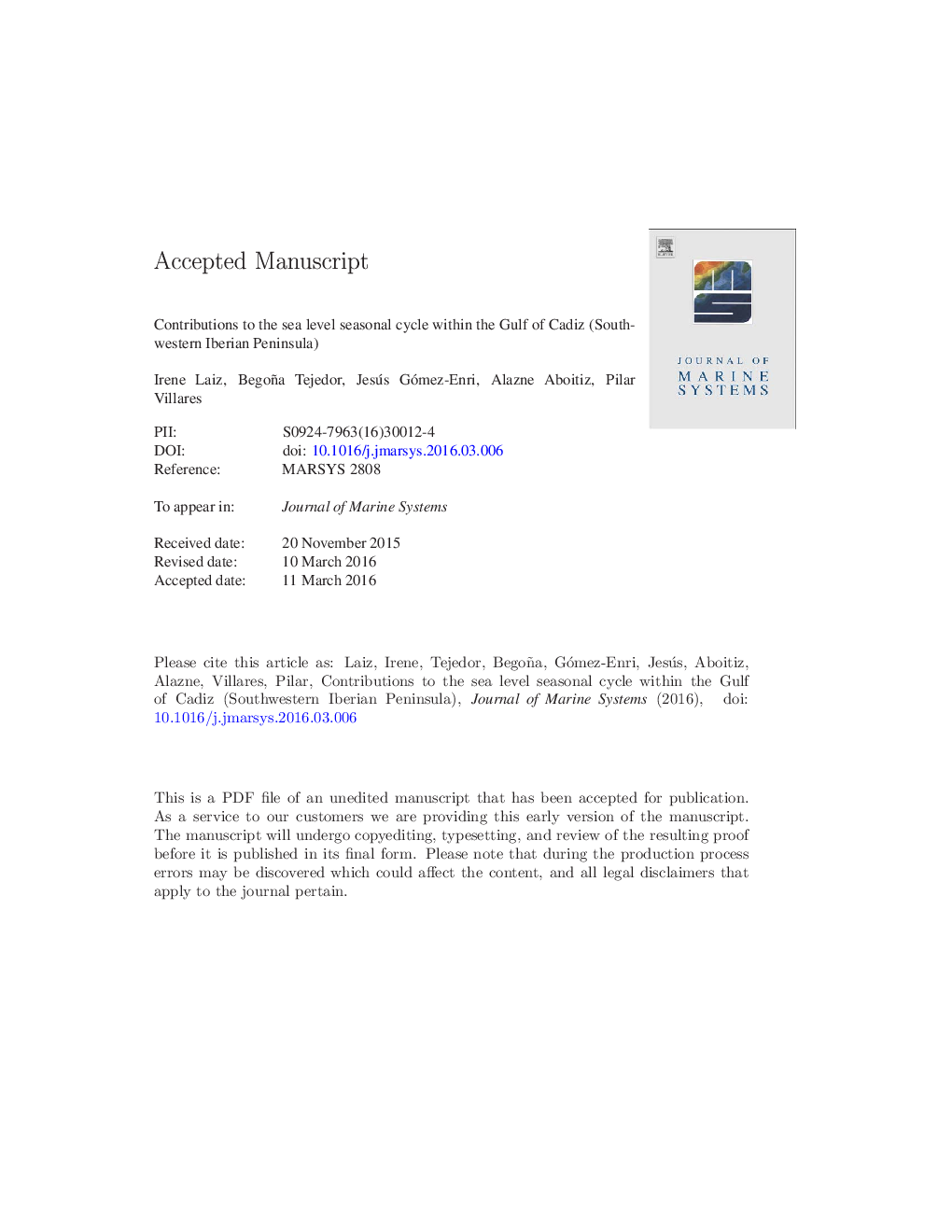| Article ID | Journal | Published Year | Pages | File Type |
|---|---|---|---|---|
| 6386640 | Journal of Marine Systems | 2016 | 50 Pages |
Abstract
The spatial distribution of the sea level seasonal cycle within the Gulf of Cadiz (GoC) has been analysed using monthly maps of sea level anomalies from gridded multi-mission altimeter data, along with monthly means of sea level heights from three tide gauge stations. Moreover, the contribution to the sea level seasonal cycle of atmospheric pressure and wind and the steric effect were evaluated using maps of sea level residuals from the VANI2-ERA hindcast, and a combination of satellite Sea Surface Temperature maps with a very high resolution Temperature and Salinity climatology for the region. The atmospheric contribution accounted for 55-58% of the sea level variance offshore, with this percentage diminishing toward the coast, where the effect of wind stress might be underestimated, especially over regions of complex bathymetry. The steric contribution was addressed by considering local, open ocean, basin-wide and continental shelf steric effects. Results obtained highlighted the oceanographic complexity of the GoC at regional scales. In this sense, the open ocean steric contribution explained the largest percentage of atmospheric-corrected sea level variance at the offshore part of the basin (50-67%) and over the eastern shelf (42-48%), suggesting that the sea level seasonal cycle within the eastern shelf is connected to the large scale circulation system. West of Cape Santa Maria, both over the continental shelf and offshore, the best results were obtained with the local steric contribution, suggesting a decoupling of deep and shallow water sea level variations at the seasonal scale in that region.
Related Topics
Physical Sciences and Engineering
Earth and Planetary Sciences
Oceanography
Authors
Irene Laiz, Begoña Tejedor, Jesús Gómez-Enri, Alazne Aboitiz, Pilar Villares,
